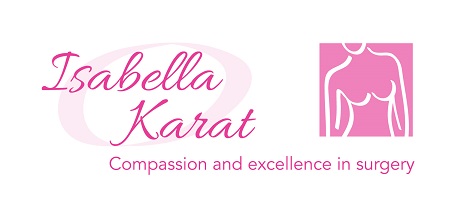Fat Transfer (Fat injection) to Breast
You are going to have structural fat transfer to the breast. This procedure is also referred to as ‘Fat injection’ or ‘Lipofilling’. This procedure has been performed worldwide for over twenty years. This leaflet explains what the procedure involves and some of the potential benefits and problems.
What is Fat injection and how is it performed?
This procedure involves taking fat tissue (liposuction) from your tummy wall, thighs or buttocks, preparing this tissue and then re-injecting it into your breast. Your surgeon will discuss with you the most appropriate place to take the fat from. The procedure is usually done under a general anaesthetic and you may need to stay overnight.
Who would benefit from Fat injections?
In our unit this procedure is usually performed in patients who have developed an indentation in the breast following lumpectomy and radiotherapy for breast cancer. We also use this technique in patients who have had breast reconstruction in whom the breast shape may be improved.
This procedure is also used in men who have developed a deformity after treatment for gynaecomastia (Enlargement of breasts in men). Worldwide, fat is being injected for cosmetic reasons into faces, hands and other areas of the body to improve appearance.
What are the benefits of Fat injection?
The benefit is to improve the appearance of the breast by reducing ‘dents’, replacing volume deficits and in some cases it improves skin appearances after radiotherapy.
What are the risks of Fat injections?
All operations carry some risks and fat injections can be associated with problems.
These include:
- Bleeding can occur at the site of liposuction or in your breast. This bleeding is called haematoma and sometimes a smaller operation would be needed to remove this blood.
- Bruising is common at the site of liposuction and occasionally in your breast. Bruising usually settles in a few weeks and does not require any specific treatment.
- Infection can occur at the site of liposuction or in your breast where the fat has been injected.
- The signs of infection are redness, swelling, increase in temperature and discomfort at the site of the wound infection. Should the wound get infected, you will be reviewed and given antibiotics if appropriate. Wound infection after fat injection treatment is uncommon and you will be given antibiotics at the time of your operation to reduce this risk.
- Pain can occur at the site of liposuction and should respond to painkillers that will be given at discharge. Injury to abdominal organs from liposuction to the abdomen may be a serious but very rare complication.
- Nerve injury; during liposuction, some of the nerves carrying sensation from the overlying skin may be damaged, and this could result in numbness which is usually temporary but can be permanent. Very rarely some patients may experience altered sensation called paraesthesia as a result of nerve damage.
- Some of the fat that has been injected into your breast may not survive and can die this is called fat necrosis. This may present as a lump in the breast and will be checked and treated by your specialist. Treatment sometimes involves removal with a needle and syringe.
- Repeat procedure: Sometimes the procedure needs to be repeated to achieve the desired effect.
- Stem cells; It is believed that some of the cells in fat have properties that allow improvement in your skin and tissue texture and form, this is one of the main reasons that this procedure is used cosmetically. It is unknown if these properties can have any negative effects on the risk of breast cancer recurrence, but to date no such problems have been recorded in the breast.
- Underlying implant damage. If fat transfer is being used to improve volume of a breast reconstruction, there is a slight risk of the implant shell being damaged. In such cases you may need to have the implant replaced
Are there any alternative treatments available?
Your specialist will discuss all treatment options available to you at your consultation.
What will happen if I decide not to have treatment?
If you decide not to have treatment, the appearance of your breast will remain the same
What sort of anaesthetic will be given to me?
You will be given a general anaesthetic. General anaesthesia is drug-induced unconsciousness. It is always provided by an anaesthetist, who is a doctor with specialist training. Unfortunately, general anaesthesia can cause side effects and complications. Side effects are common but are usually short lived; they include nausea, confusion and pain. Complications are rare, but can cause lasting injury: they include awareness, paralysis and death.
In addition local anaesthesia will be given to the part of the body where the fat will be taken.
If you are worried about any of these risks, please speak to your consultant.
Going Home
You will usually be able to go home the following day.
Pain relief and medication
The nursing staff will advise you about painkillers before you leave the hospital. Please tell the nurses what painkilling tablets you have at home. You will be advised to wear a compression garment for two weeks post-operatively. This is to help with swelling, bruising and for your comfort. Some people find the use of arnica also helps with bruising.
Your wound
Your wound will be checked at the time of your clinic visit by your consultant. If you have excessive pain or swelling at your wound sites, you should contact the ward, GP or the breast secretary.
Returning to work
You should be able to get back to work within few weeks after the procedure. You can self-certify for the first seven days of sickness. After this, a medical certificate (sick note) may be issued by your doctor to cover the expected time
Further Appointments
You will be given a clinic appointment when you are discharged from the ward.
